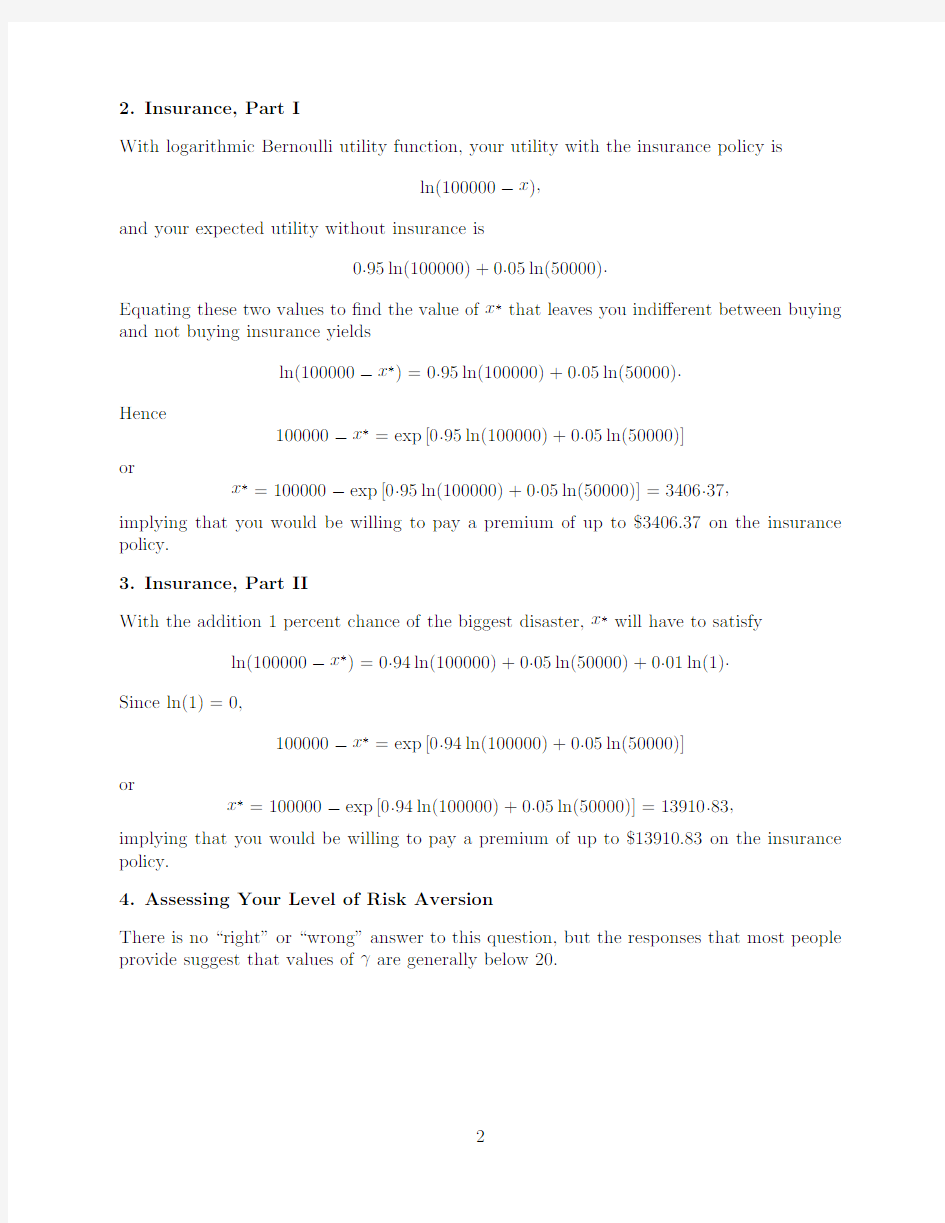answer4


Solutions to Problem Set4
EC379.01-Financial Economics Peter Ireland Boston College,Department of Economics Fall2014
Due Thursday,February27
1.Interpreting Measures of Risk Aversion
With vN-M expected utility and Bernoulli utility function
u(Y)=Y1?γ?1 1?γ
and initial wealth Y0=10,expected utility from accepting the lottery(0.1,?0.1,π?)is
π?
10.11?γ?1
1?γ
+(1?π?)
9.91?γ?1
1?γ
while expected utility from rejecting the lottery is just
101?γ?1
1?γ
.
Hence,if the investor is indi?erent between accepting and rejecting
π?
10.11?γ?1
1?γ
+(1?π?)
9.91?γ?1
1?γ
=
101?γ?1
1?γ
or,more simply,
π?(10.11?γ)+(1?π?)(9.91?γ)=101?γ. Rearranging this last expression yields an exact formula forπ?:
π?=
101?γ?9.91?γ10.11?γ?9.91?γ
,
and for any setting forγ,this exact value can be compared to the value implied by the
approximation
π?≈1
2
+
γh
4
where h=0.01.Results from the calculations con?rm that more risk averse investors require a higher value ofπ?and also con?rm the accuracy of the appoximation:
γExactπ?Approximateπ?
1/20.50130.5012
20.50500.5050
30.50750.5075
100.52500.5250
1000.73120.7500
2.Insurance,Part I
With logarithmic Bernoulli utility function,your utility with the insurance policy is
ln(100000?x),
and your expected utility without insurance is
0.95ln(100000)+0.05ln(50000).
Equating these two values to?nd the value of x?that leaves you indi?erent between buying and not buying insurance yields
ln(100000?x?)=0.95ln(100000)+0.05ln(50000).
Hence
100000?x?=exp[0.95ln(100000)+0.05ln(50000)]
or
x?=100000?exp[0.95ln(100000)+0.05ln(50000)]=3406.37,
implying that you would be willing to pay a premium of up to$3406.37on the insurance policy.
3.Insurance,Part II
With the addition1percent chance of the biggest disaster,x?will have to satisfy
ln(100000?x?)=0.94ln(100000)+0.05ln(50000)+0.01ln(1).
Since ln(1)=0,
100000?x?=exp[0.94ln(100000)+0.05ln(50000)]
or
x?=100000?exp[0.94ln(100000)+0.05ln(50000)]=13910.83,
implying that you would be willing to pay a premium of up to$13910.83on the insurance policy.
4.Assessing Your Level of Risk Aversion
There is no“right”or“wrong”answer to this question,but the responses that most people provide suggest that values ofγare generally below20.
